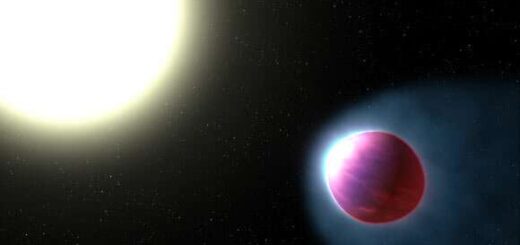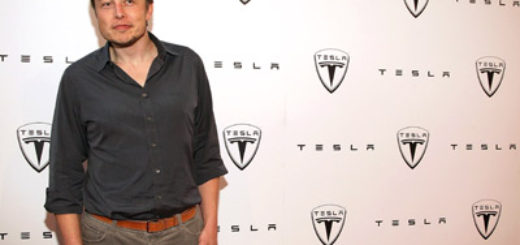Advanced Extraterrestrial Civilizations – Their Technology And Capabilities: What Can They Achieve?
– “Any sufficiently advanced technology is indistinguishable from magic, “Arthur C. Clarke once wrote a long time ago.
In this article we take a look at who could be out there and what kind of advanced technology they could posses.
“Soon, humanity may face an existential shock as the current list of a dozen Jupiter-sized extra-solar planets swells to hundreds of earth-sized planets, almost identical twins of our celestial homeland.

This may usher in a new era in our relationship with the universe: we will never see the night sky in the same way ever again, realizing that scientists may eventually compile an encyclopedia identifying the precise co-ordinates of perhaps hundreds of earth-like planets,” Dr. Michio Kaku said.
On these Earth-like planets there could be livings similar to us, or maybe totally different and perhaps even light years ahead of us when it comes to technology.
So, naturally we might wonder how advanced the physics of extraterrestrial civilizations could be.
Several scientists, among them Dr. Micho Kaku have debated how to classify extraterrestrial civilizations.
“Although it is impossible to predict the precise features of such advanced civilizations, their broad outlines can be analyzed using the laws of physics. No matter how many millions of years separate us from them, they still must obey the iron laws of physics, which are now advanced enough to explain everything from sub-atomic particles to the large-scale structure of the universe, through a staggering 43 orders of magnitude, “Dr. Kaku said.
Specifically, we can rank civilizations by their energy consumption, using the following principles:
1) The laws of thermodynamics. Even an advanced civilization is bound by the laws of thermodynamics, especially the Second Law, and can hence be ranked by the energy at their disposal.
2) The laws of stable matter. Baryonic matter (e.g. based on protons and neutrons) tends to clump into three large groupings: planets, stars and galaxies. (This is a well-defined by product of stellar and galactic evolution, thermonuclear fusion, etc.) Thus, their energy will also be based on three distinct types, and this places upper limits on their rate of energy consumption.
3) The laws of planetary evolution. Any advanced civilization must grow in energy consumption faster than the frequency of life-threatening catastrophes (e.g. meteor impacts, ice ages, supernovas, etc.). If they grow any slower, they are doomed to extinction. This places mathematical lower limits on the rate of growth of these civilizations.
In a seminal paper published in 1964 in the Journal of Soviet Astronomy, Russian astrophysicist Nicolai Kardashev theorized that advanced civilizations must therefore be grouped according to three types: Type I, II, and III, which have mastered planetary, stellar and galactic forms of energy, respectively.
He calculated that the energy consumption of these three types of civilization would be separated by a factor of many billions.
Berkeley astronomer Don Goldsmith reminds us that the earth receives about one billionth of the suns energy, and that humans utilize about one millionth of that.
So we consume about one million billionth of the suns total energy.
At present, our entire planetary energy production is about 10 billion billion ergs per second. But our energy growth is rising exponentially, and hence we can calculate how long it will take to rise to Type II or III status.
“Look how far we have come in energy uses once we figured out how to manipulate energy, how to get fossil fuels really going, and how to create electrical power from hydropower, and so forth; we’ve come up in energy uses in a remarkable amount in just a couple of centuries compared to billions of years our planet has been here … and this same sort of thing may apply to other civilizations,” Goldsmith says.
Physicist Freeman Dyson of the Institute for Advanced Study estimates that, within 200 years or so, we should attain Type I status. In fact, growing at a modest rate of 1% per year, Kardashev estimated that it would take only 3,200 years to reach Type II status, and 5,800 years to reach Type III status. Living in a Type I,II, or III civilization.
For example, a Type I civilization is a truly planetary one, which has mastered most forms of planetary energy. Their energy output may be on the order of thousands to millions of times our current planetary output.
“Everyone complains about the weather, but no one does anything about it,” Mark Twain once said.
This may change with a Type I civilization, which has enough energy to modify the weather. They also have enough energy to alter the course of earthquakes, volcanoes, and build cities on their oceans.Currently, our energy output qualifies us for Type 0 status. We derive our energy not from harnessing global forces, but by burning dead plants (e.g. oil and coal). But already, we can see the seeds of a Type I civilization.
We see the beginning of a planetary language (English), a planetary communication system (the Internet), a planetary economy (the forging of the European Union), and even the beginnings of a planetary culture (via mass media, TV, rock music, and Hollywood films).
By definition, an advanced civilization must grow faster than the frequency of life-threatening catastrophes. Since large meteor and comet impacts take place once every few thousand years, a Type I civilization must master space travel to deflect space debris within that time frame, which should not be much of a problem. Ice ages may take place on a time scale of tens of thousands of years, so a Type I civilization must learn to modify the weather within that time frame.
Artificial and internal catastrophes must also be negotiated. But the problem of global pollution is only a mortal threat for a Type 0 civilization; a Type I civilization has lived for several millennia as a planetary civilization, necessarily achieving ecological planetary balance. Internal problems like wars do pose a serious recurring threat, but they have thousands of years in which to solve racial, national, and sectarian conflicts.
Eventually, after several thousand years, a Type I civilization will exhaust the power of a planet, and will derive their energy by consuming the entire output of their suns energy, or roughly a billion trillion trillion ergs per second.
With their energy output comparable to that of a small star, they should be visible from space. Dyson has proposed that a Type II civilization may even build a gigantic sphere around their star to more efficiently utilize its total energy output. Even if they try to conceal their existence, they must, by the Second Law of Thermodynamics, emit waste heat. From outer space, their planet may glow like a Christmas tree ornament. Dyson has even proposed looking specifically for infrared emissions (rather than radio and TV) to identify these Type II civilizations.
Perhaps the only serious threat to a Type II civilization would be a nearby supernova explosion, whose sudden eruption could scorch their planet in a withering blast of X-rays, killing all life forms.
Thus, perhaps the most interesting civilization is a Type III civilization, for it is truly immortal. They have exhausted the power of a single star, and have reached for other star systems. No natural catastrophe known to science is capable of destroying a Type III civilization.
Faced with a neighboring supernova, it would have several alternatives, such as altering the evolution of dying red giant star which is about to explode, or leaving this particular star system and terraforming a nearby planetary system.
There are roadblocks to an emerging Type III civilization. Eventually, it bumps up against another iron law of physics, the theory of relativity. Dyson estimates that this may delay the transition to a Type III civilization by perhaps millions of years.
But even with the light barrier, there are a number of ways of expanding at near-light velocities. For example, the ultimate measure of a rockets capability is measured by something called “specific impulse” (defined as the product of the thrust and the duration, measured in units of seconds). Chemical rockets can attain specific impulses of several hundred to several thousand seconds. Ion engines can attain specific impulses of tens of thousands of seconds. But to attain near-light speed velocity, one has to achieve specific impulse of about 30 million seconds, which is far beyond our current capability, but not that of a Type III civilization.A variety of propulsion systems would be available for sub-light speed probes (such as ram-jet fusion engines, photonic engines, etc.)
In science fiction, the search for inhabitable worlds has been immortalized on TV by heroic captains boldly commanding a lone star ship, or as the murderous Borg, a Type III civilization which absorbs lower Type II civilization (such as the Federation). However, the most mathematically efficient method to explore space is far less glamorous: to send fleets of “Von Neumann probes” throughout the galaxy (named after John Von Neumann, who established the mathematical laws of self-replicating systems).
A Von Neumann probe is a robot designed to reach distant star systems and create factories which will reproduce copies themselves by the thousands. A dead moon rather than a planet makes the ideal destination for Von Neumann probes, since they can easily land and take off from these moons, and also because these moons have no erosion.
These probes would live off the land, using naturally occurring deposits of iron, nickel, etc. to create the raw ingredients to build a robot factory. They would create thousands of copies of themselves, which would then scatter and search for other star systems.Similar to a virus colonizing a body many times its size, eventually there would be a sphere of trillions of Von Neumann probes expanding in all directions, increasing at a fraction of the speed of light. In this fashion, even a galaxy 100,000 light years across may be completely analyzed within, say, a half million years.
If a Von Neumann probe only finds evidence of primitive life (such as an unstable, savage Type 0 civilization) they might simply lie dormant on the moon, silently waiting for the Type 0 civilization to evolve into a stable Type I civilization. After waiting quietly for several millennia, they may be activated when the emerging Type I civilization is advanced enough to set up a lunar colony. Physicist Paul Davies of the University of Adelaide has even raised the possibility of a Von Neumann probe resting on our own moon, left over from a previous visitation in our system aeons ago. (If this sounds a bit familiar, that’s because it was the basis of the film, 2001. Originally, Stanley Kubrick began the film with a series of scientists explaining how probes like these would be the most efficient method of exploring outer space. Unfortunately, at the last minute, Kubrick cut the opening segment from his film, and these monoliths became almost mystical entities)
There is also the possibility that a Type II or Type III civilization might be able to reach the fabled Planck energy with their machines (10^19 billion electron volts). This is energy is a quadrillion times larger than our most powerful atom smasher. This energy, as fantastic as it may seem, is (by definition) within the range of a Type II or III civilization.
The Planck energy only occurs at the center of black holes and the instant of the Big Bang. But with recent advances in quantum gravity and superstring theory, there is renewed interest among physicists about energies so vast that quantum effects rip apart the fabric of space and time.
Although it is by no means certain that quantum physics allows for stable wormholes, this raises the remote possibility that a sufficiently advanced civilizations may be able to move via holes in space, like Alice’s Looking Glass. And if these civilizations can successfully navigate through stable wormholes, then attaining a specific impulse of a million seconds is no longer a problem. They merely take a short-cut through the galaxy. This would greatly cut down the transition between a Type II and Type III civilization.
Second, the ability to tear holes in space and time may come in handy one day. Astronomers, analyzing light from distant supernovas, have concluded recently that the universe may be accelerating, rather than slowing down. If this is true, there may be an anti-gravity force (perhaps Einstein’s cosmological constant) which is counteracting the gravitational attraction of distant galaxies. But this also means that the universe might expand forever in a Big Chill, until temperatures approach near-absolute zero. Several papers have recently laid out what such a dismal universe may look like. It will be a pitiful sight: any civilization which survives will be desperately huddled next to the dying embers of fading neutron stars and black holes. All intelligent life must die when the universe dies, according to Dr. Kaku.
All this makes us wonder whether there an inevitable end for intelligent life, no matter how advanced the particular civilization may become?
“Astronomer John Barrows of the University of Sussex writes, “Suppose that we extend the classification upwards.
Members of these hypothetical civilizations of Type IV, V, VI, … and so on, would be able to manipulate the structures in the universe on larger and larger scales, encompassing groups of galaxies, clusters, and superclusters of galaxies.” Civilizations beyond Type III may have enough energy to escape our dying universe via holes in space,” Dr. Kaku said.



 Creators of mankind
Creators of mankind Description of “Tall white aliens”
Description of “Tall white aliens” Where they came from?
Where they came from? About hostile civilizations
About hostile civilizations The war for the Earth
The war for the Earth “Tall white aliens” about eternal life
“Tall white aliens” about eternal life Video: “Nordic aliens”
Video: “Nordic aliens” Aliens
Aliens Alien encounters
Alien encounters The aliens base
The aliens base UFO
UFO Technology UFO
Technology UFO Underground civilization
Underground civilization Ancient alien artifacts
Ancient alien artifacts Military and UFO
Military and UFO Mysteries and hypotheses
Mysteries and hypotheses Scientific facts
Scientific facts


















